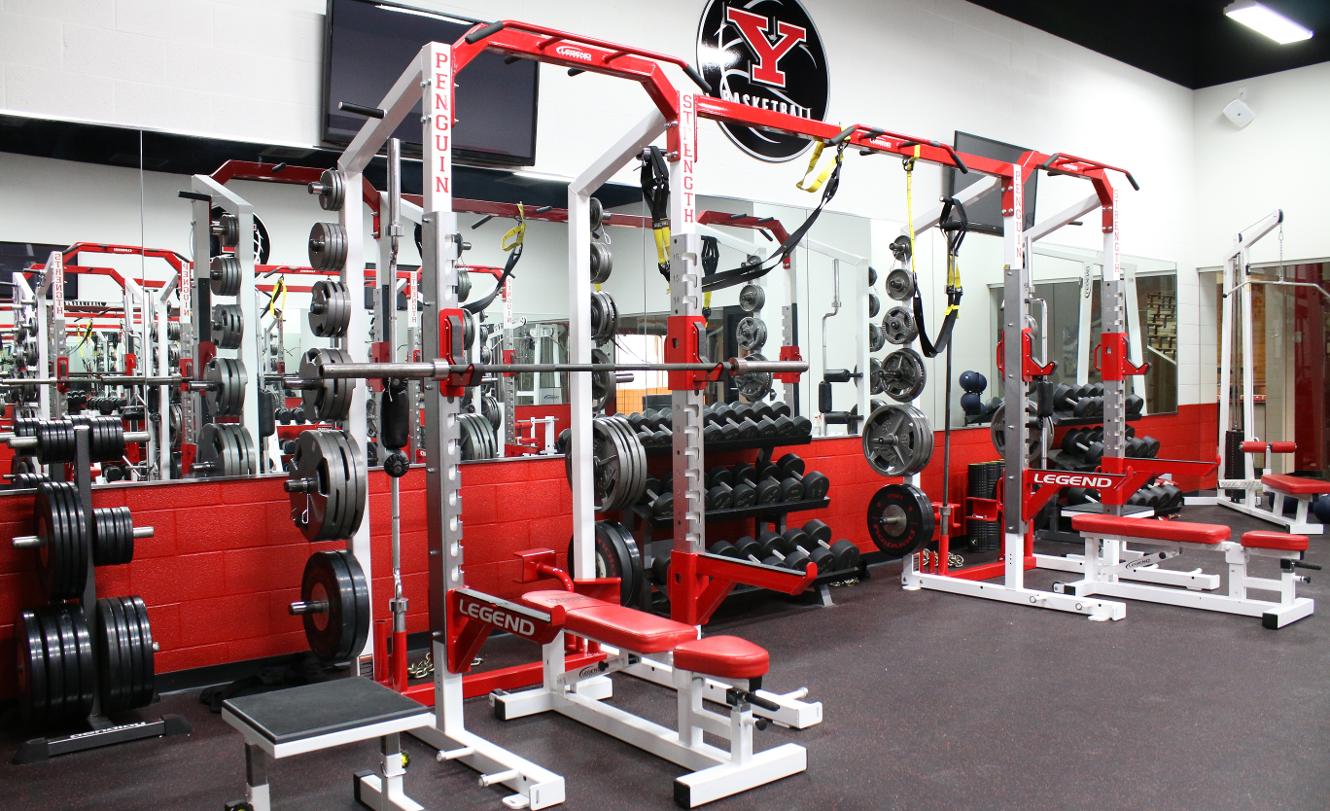The Relationship Between Strength Coach and Athletic Trainer
The focus on athlete health and performance is at the highest it has ever been, and the lens is only getting smaller. Around the country, athletic departments and professional organizations are moving towards a more integrated health and performance model where decisions regarding an athlete’s well-being and physical activity fall under the umbrella of an entire staff of individuals with specialized focuses.
New sport facilities are being built where all of the athlete’s needs are under one roof. The weight room and athletic training room are becoming one and the same. “Fuel stations” and nutrition centers are located just around the corner from the squat racks. Massage therapists and sports psychologists are always on call or even have their own office attached to the athletic facility. All of this done with the intention of maximizing athletic potential and overall well-being, and with recent events concerning the death of athletes and players being hospitalized for nefarious and negligent workouts, it’s no wonder institutions and organizations are going these lengths.
For the strength and conditioning professional, it can be a confusing road to navigate. Where does the S&C coach fit under this umbrella? What are the most important relationships to develop? And how does one prepare themselves for this mergence?
Finding Room Under the Umbrella
Each one of the individual roles serves the athletes in a significant way, but the strength and conditioning coach usually is spending the most time with the athletes. The S&C coach must be the ultimate collaborator. He or she needs to be familiar with each performance and wellness domain that the athlete is involved in and has to be able to speak that professional language. In some circumstances, such as at the high school level or smaller colleges and universities, the S&C coach must wear the proverbial multipurpose hat and be the one to serve all of these roles. Regardless of the particular situation, some relationships are more directly related to the job the S&C coach does.
Strength Coach/Athletic Trainer Title
This isn’t to say that any one job is more important than the other, but as a strength and conditioning coach, the athletic trainer might be the most impactful relationship you build on any staff – aside from your own head coach. Whether you’re coaching high school athletes, collegiate athletes, professional athletes, or private clients, having a positive relationship with an athletic trainer is absolutely crucial to your success and, more importantly, the individuals you coach.
With the advent of these multipurpose athletic facilities, the roles of the S&C coach and athletic trainer are becoming more intertwined. Does this mean that to be a strength coach in the future you should now seek an athletic training degree? I don’t think so. This also doesn’t mean AT’s are now coming for the strength coach’s job, but you should be able to describe the distinct differences between the two roles and be able to form a positive bond with the AT.
As a strength and conditioning coach, you may have similar concerns as the AT, but ultimately your top priority is maximizing performance and ensuring your athletes stay injury free inside and outside of the weight room. Comparatively, athletic trainers are health-care professionals who bridge the gap between everyone else and doctors. According the National Athletic Trainer Association (NATA), “Athletic training encompasses the prevention, examination, diagnosis, treatment and rehabilitation emergent, acute or chronic injuries and medical conditions.” When it comes to the health and well-being of athletes, the athletic trainer has the final say before seeing a doctor or another health-care professional. For this reason and many more, their role may be one of the most valuable in an athletic organization. In most cases, the AT knows the athletes’ bodies better than the athlete does. A lot of times their job is reactive; implementing recovery protocols and treatment strategies for the most recent injury or illness. However, if a proper relationship is formed, it can be a proactive pursuit to ensure ultimate performance and health.
Word of Advice
I have been fortunate enough to have worked alongside several great athletic trainers. However, I have heard the occasional horror story where there is zero collaboration. To ensure a positive working relationship and to do the best for your athletes, consider these words of advice:
+ Communicate everything. Discuss with the AT your periodized plan for all training phases. This should be reciprocated with specific modifications for athletes and with information regarding their recovery process. The AT may even share some valuable insight on training plans that you may have missed. Lastly here, don’t be afraid to ask questions. Don’t leave things unsaid or in a state of ambiguity.
+ Check-in several times a week. I was once told it’s a bad sign if the S&C coach is in the athletic training room. However, periodically stopping by the ATR shows that you really do care about the athletes’ well-being and may even give you some perspective into the job the AT’s do on a daily basis. This also coincides with the communication point, as face-to-face interactions usually go over much better in the long-term than e-messages or second-hand information from the athletes.
+ Speak the language. You don’t need a degree in athletic training to be able to discuss anatomy, exercise prescriptions, or have a reasonable understanding of the various mechanisms of injuries, but you do need to do your homework. Being able to have a conversation with an athletic trainer where both sides can communicate effectively will go a long way in the success of your athletic program and overall career.
Closing Thoughts
Change is inevitable no matter the profession. Strength and conditioning is not immune to this. Coaches must be prepared for a change in the landscape at any point. Those that can be foreword thinking, anticipate the ebbs and flows in trends, and continue to find ways to keep improving themselves, will ultimately be able to find success in any environment.
Subscribe to our blog
Subscribe to receive the latest blog posts to your inbox every week.
Related posts

Connecting the Training Room With the Weight Room

Getting Back in the Game: Helping Athletes Mentally Prepare After an Injury


